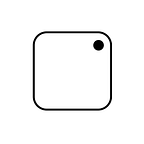28. How to consistently make great 3D prints?
The answer to the above question is to maintain your printer in the best form.
Your printer is a machine with many moving parts. As with all moving parts wear and tear and its side effects will have an impact on the quality of the prints.
The good thing is if we take care, each time — before and after the print, we can ensure the quality of the print.
I have an Ender 3, but below are the tips and lessons that I have learned which are applicable to other FDM printer brands too.
- Level the bed: The most fundamental step is to have a leveled bed. You can manually do it with a piece of paper, but having an auto bed level sensor with a bed visualizer OctoPrint plugin makes it a lot easier. While leveling the bed make sure the bed and nozzle are at the target temperatures. You can even go ahead and print an on-the-fly bed level test and make an adjustment on runtime.
- Z Level offset: In case you have made any modifications or changes in bed or nozzle or driving system, chances are there that the Z level needs adjustment or calibration. Here is a post that explains how to do it using OctoPrint.
- Tightness of the belts: There are two belts used in Ender 3 printer. Make sure they are not loose. If it is loose you can adjust the belt tensioner. At the same time, it should not be overtight where the X-axis or Y-axis can barely move.
- Dust and Debris: After repeated movement along X-axis and Y-axis, dust and debris will start building upon the rails. With the help of paper and isopropyl alcohol, you can clean it. Bigger debris can also be vacuumed.
5. Level of X Gantry and Y Carriage: The X Gantry and the Y carriage should not wobble freely on their sides. Adjust the eccentric screw if it does. However, it should not be overtight where the X-axis or Y-axis can barely move. On a high level, make sure your printer is on a stable surface.
6. The correct build plate: I have never used the Ender 3 build plate that came with it. I bought a borosilicate tempered glass at first. It worked for a while with gluestick and painter's tape but cleaning up was always a mess. Then I bought a flexible steel PEI build surface and a magnetic base and never looked back. On a retrospective, I should have done it a long time ago.
7. Multi-point inspection checklist: 1) Extruder gear wheel. After a long time of grinding, filament dust accumulates on the gear wheel which can negatively impact the retraction and forward motion of the filament. Use a steel brush to clean it. 2) PTFE tube tip. If you are changing the filament, check the tip of the PTFE tube. If there are black burn marks or molted filament debris inside the PTFE tube, cut that end shorter. 3) Extruder nozzle. It is a good idea to change the nozzle every once in a while after prolonged use. Clean it with a bronze brush.
8. Fan speed: Make sure the fan runs at its best speed. After some printing, I have seen it clogged with fine strands of filament. Reduced speed of the fan can have a negative impact on maintaining the overall temperature of the extruder unit. Clean it with a plastic brush.
9. Lubrication: The only metallic part that needs lubrication is the Z-axis rod on Enders. Clean it with paper and cleaning alcohol and apply either Super lube Synthetic Oil with PTFE or Super lube white grease with PTFE.
10. Filament Temperature: It is always a good idea to find the correct temperature of a filament by printing a temperature tower. Here is a post that describes the process.
11. Extras: Use good slicing software. My choice is Ultimaker Cura. If you live in a place with a lot of humidity, make sure to keep the filaments dry. Especially if it is PLA. If it is a long print and you cannot be near the printer, use a smart plug and a camera to monitor the printer and turn it off remotely if needed. I use this smart plug and this camera.
Below is an example of an almost leveled bed, created by the Bed Visualizer plugin for OctoPrint.
Hope this helps!
